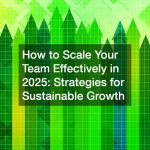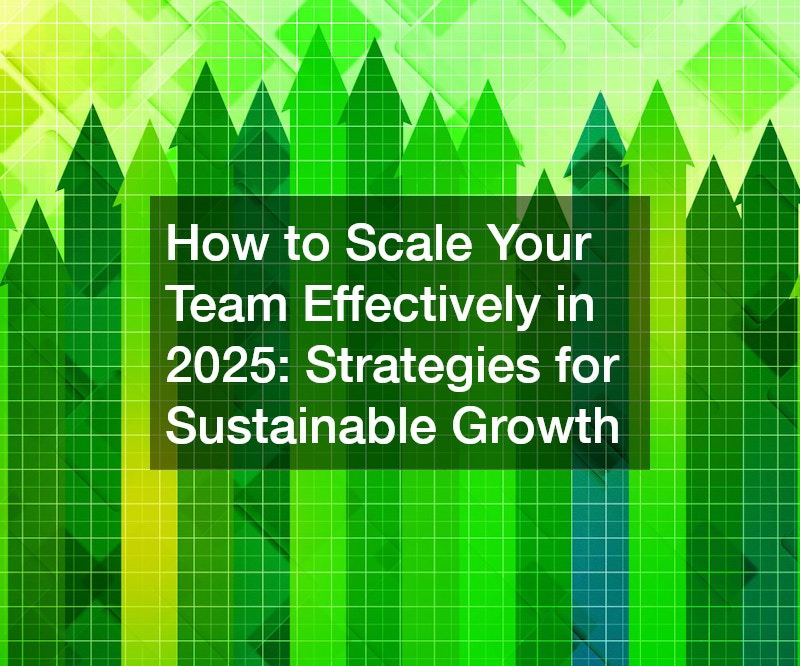Scaling a business is an exciting but challenging endeavour. As Australian businesses navigate evolving market conditions, digital transformation, and changing workforce expectations, having the right team in place is crucial for sustainable growth.
In 2025, the approach to scaling teams is shifting. Businesses must balance efficiency, culture, and adaptability to build high-performing teams that drive long-term success. This guide explores practical strategies for scaling your team effectively while maintaining productivity, engagement, and alignment with your business goals.
Understanding When to Scale Your Team
Recognising the Signs That It’s Time to Scale
Many business owners struggle to determine the right time to expand their workforce. Here are key indicators that scaling may be necessary:
- Increased Workload Strains Current Employees – If your team is consistently overworked, it may lead to burnout, reduced productivity, and increased turnover.
- Customer Demand Outpaces Capacity – If your business struggles to meet customer expectations or deliver services on time, more staff may be required.
- Missed Growth Opportunities – If you’re declining new projects or struggling to innovate due to a lack of resources, it’s time to scale.
- Revenue Growth Supports Expansion – If your business has reached a stable revenue threshold and can sustain additional salaries, strategic hiring can be the next step.
Assessing Your Business Readiness for Scaling

Before expanding your team, conduct a business readiness assessment:
- Financial Health Check: Analyse revenue trends, cash flow, and profit margins.
- Operational Scalability: Assess whether your current systems, workflows, and technology can support an expanded workforce.
- Company Culture and Leadership Readiness: Ensure your leadership team is equipped to manage a larger, more complex organisation.
Building a Scalable Hiring Strategy
Prioritising Strategic Roles for Growth
Not all positions need to be filled simultaneously. Prioritise hiring based on the areas with the greatest impact. Roles that typically drive scalability include:
- Operations & Process Management – To streamline workflows and improve efficiency.
- Sales & Marketing Experts – To drive revenue growth and market expansion.
- Customer Experience & Support – To ensure service quality scales alongside growth.
- Technology & Automation Specialists – To support digital transformation efforts.
Hiring for Skills, Culture, and Future Growth
A well-balanced hiring approach focuses on three key areas:
- Skills and Experience: Hire candidates with the technical expertise to drive immediate impact.
- Cultural Fit: Ensure new hires align with company values and team dynamics.
- Growth Potential: Look for individuals with the ability to grow into leadership roles.
According to a 2024 LinkedIn report, 76% of Australian hiring managers prioritise cultural fit as a key factor in recruitment.
Leveraging Flexible Hiring Models
Scaling doesn’t always mean hiring full-time employees. Consider these alternative models:
- Freelancers & Contractors: Useful for project-based work and specialised skills.
- Part-Time & Casual Staff: Ideal for seasonal or fluctuating workloads.
- Remote & Hybrid Teams: Expands the talent pool and supports work-life balance.
Optimising Onboarding and Training for New Hires
Designing a Comprehensive Onboarding Process
Strong onboarding increases employee retention and accelerates productivity. Key elements include:
- Preboarding Communication: Engage employees before their start date with welcome materials.
- Structured Training Plans: Provide role-specific training and mentorship.
- Cultural Immersion: Introduce new hires to company values, mission, and team culture.
Implementing Continuous Learning & Development
Investing in employee development enhances engagement and productivity. Consider:
- Upskilling Programs: Keep employees updated on industry trends and technologies.
- Leadership Development: Train high-potential employees for future management roles.
- Cross-Training Initiatives: Enhance workforce flexibility by equipping employees with multiple skill sets.
According to the Australian HR Institute, 80% of employees stay longer in companies that offer professional development opportunities.
Technology & Automation for Efficient Team Scaling
Using HR Tech to Streamline Hiring and Management
Adopting HR technology can make scaling more efficient. Consider tools like:
- Applicant Tracking Systems (ATS): Automates recruitment and shortlisting.
- HR Management Software: Manages employee records, payroll, and performance tracking.
- Collaboration Tools: Platforms like Slack, Microsoft Teams, and Asana enhance team communication.
Automating Repetitive Processes to Boost Productivity
Scaling doesn’t always mean adding headcount. Process automation can help manage workloads effectively:
- Chatbots & AI Assistants: Handle customer inquiries and reduce administrative tasks.
- Automated Reporting Tools: Simplify data analysis and decision-making.
- Workflow Automation Software: Streamline approvals, task assignments, and document processing.
A study by Deloitte found that Australian businesses using automation tools experienced a 40% increase in productivity.
Maintaining a Strong Company Culture While Scaling
Communicating Vision and Values to a Growing Team
As businesses expand, maintaining a unified culture becomes challenging. Strategies to reinforce culture include:
- Regular Leadership Communication: Keep employees aligned with company goals through town halls and newsletters.
- Recognition Programs: Acknowledge and reward employees who embody company values.
- Inclusive Decision-Making: Involve employees in shaping workplace culture and policies.
Fostering Collaboration and Employee Engagement
A collaborative work environment supports innovation and productivity. Key approaches include:
- Team-Building Activities: Strengthen relationships through social events and workshops.
- Cross-Functional Projects: Encourage collaboration across different departments.
- Flexible Work Policies: Support employee well-being and work-life balance.
According to PwC Australia, companies with high employee engagement are 21% more profitable.
Overcoming Challenges in Team Scaling
Avoiding Common Pitfalls in Rapid Expansion
Scaling too quickly or without proper planning can lead to problems such as:
- Overhiring: Bringing in too many employees before revenue can sustain them.
- Loss of Organisational Culture: Rapid growth can dilute company values and engagement.
- Leadership Strain: Existing managers may struggle with increased team sizes.
Ensuring Compliance with Australian Employment Laws
Australian businesses must comply with workplace regulations, including:
- Fair Work Act 2009: Covers employee rights, wages, and conditions.
- Workplace Health and Safety (WHS) Standards: Ensures a safe working environment.
- Superannuation Obligations: Employers must contribute to employee retirement savings.
Consulting HR and legal professionals can help mitigate risks.
Final Thoughts: Scaling Smart for Long-Term Success
Scaling your team in 2025 requires strategic hiring, strong leadership, and the right technology. By focusing on sustainable growth, businesses can expand effectively while maintaining efficiency, engagement, and profitability.
Key takeaways:
- Assess business readiness before scaling.
- Prioritise hiring for critical roles with a mix of full-time, freelance, and remote talent.
- Implement structured onboarding and continuous learning programs.
- Use technology and automation to enhance efficiency.
- Maintain a strong culture and comply with employment regulations.
A well-planned approach ensures that your business not only grows but thrives in an evolving landscape.






